For those who focus on having a perfectly weed-free lawn, determining whether a weed is a dandelion or one of its look-alikes may not matter; however, if you are a forager who loves dandelions for their many benefits, it’s important to make sure you are harvesting the right plant. Sure, you can forage in the wild –- there are certainly plenty of dandelions everywhere -– but picking dandelions in your own yard means you know they are chemical-free.
Although they are considered weeds, dandelions have many health benefits. According to Healthline, consuming dandelions helps promote liver health and reduce inflammation. The nutrient-rich foliage of this prolific plant can be eaten fresh or cooked. Dandelion roots can also be consumed fresh, but are often used dried in tea. Even the bright yellow blooms of this plant are edible, making a beautiful garnish. Some people even make dandelion wine or honey. If you are considering one of these options, make sure you have made a positive identification because some dandelion look-alikes are not edible.
Yellow hawkweed
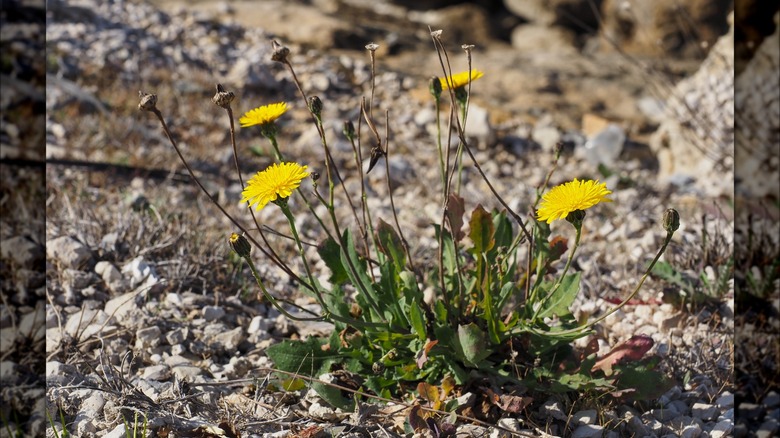
The yellow hawkweed (Pilosella caespitosa) is a European cousin to dandelions. When we think of dandelions, we don’t usually think of them as ornamentals, but that’s exactly how this plant came to North America. Also known as meadow hawkweed, this plant grows tall stems topped with clusters of yellow dandelion-like blooms. There are several distinguishing factors between these two plants, but one primary difference is in the roots. While dandelions grow from a single taproot, yellow hawkweed roots are rhizomes.
Bristly hawkbit
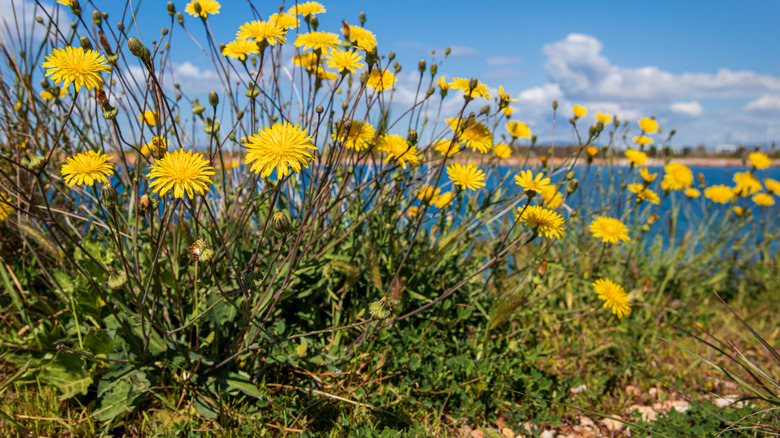
On our list of dandelion look-alikes, bristly hawkbit (Leontodon hispidus) might be the most difficult to identify because even side-by-side, these two plants look almost identical. The foliage of bristly hawkbit grows close to the ground while putting up single stems topped with a yellow bloom in late summer. It is when those blooms mature into seedheads that the difference is most clear. Dandelion seeds are less dense and feathery than those of the bristly hawkbit.
Cat’s Ear
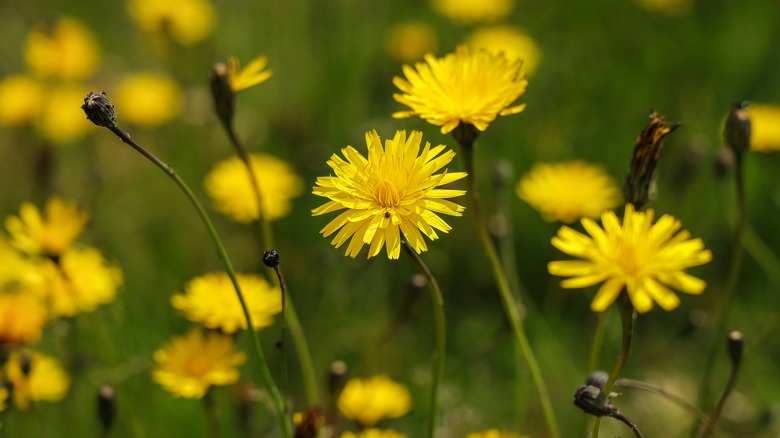
Brookgardener/Shutterstock
Also referred to as catsear or false dandelion, cat’s ear (Hypochaeris radicata) is difficult to distinguish from dandelions because they look so similar. This European native also releases milky white sap when the leaves are broken, making it even more challenging to identify. The primary difference between cat’s ear and dandelions is in the young leaves. Dandelions have smooth new growth while cat’s ear foliage emerges covered with tiny hairs.
Coast dandelion
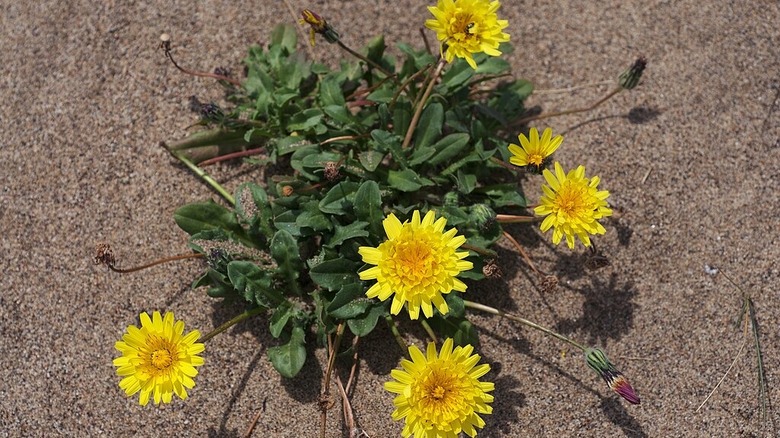
Eric in SF/Wikicommons
Located on the coastal dunes exclusively in areas of the Pacific coast, the coast dandelion (Agoseris apargioides) is a beach-dwelling cousin in the same family as true dandelions. This flower thrives in sand rather than soil and can produce blooms above and below the sandy surface. To differentiate a coast dandelion from its close relative, just consider real estate: it’s all about location, location, location.
Sow thistle
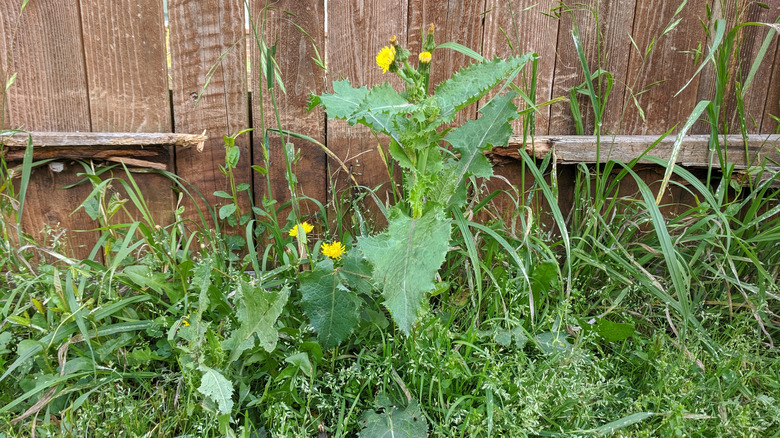
Jasmine Sahin/Shutterstock
Sow thistle (Sonchus spp.) is related to dandelions as both are in the Asteraceae family, which includes asters, artichokes, and many other garden favorites. The yellow blossoms of sow thistle are very similar to dandelions, but the growth habit is not. Whereas dandelions produce a single leafless stem topped with one flower, sow thistles have sawtooth-shaped leaves on multiple stems topped with several blooms.
Carolina desert chicory
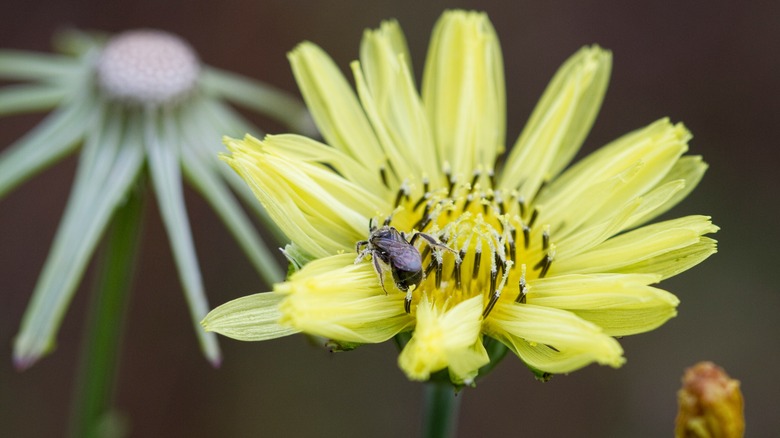
Kathy Clark/Shutterstock
With tall stalks and yellow flowers, Carolina desert chicory (Pyrrhopappus carolinianus) is another dandelion look-alike that can pop up almost anywhere. At first glance or from a distance, this wildflower bears a significant resemblance to dandelions, but upon closer inspection, the bloom produced by Carolina desert chicory features fewer petals, some of which feature a darker center. Bloom stalks also produce multiple flowers.



